The ceramophiles have spoken and Spotted is back! We will continue our Digests and our Spotted simultaneously. As you know, Spotted is our quick top picks from the world of contemporary ceramic art and contemporary ceramics. In this edition, we begin with the “styrofoam” masterpieces of Evan Hauser and some peek-y tiles.
Featured image: Fathi Hassan, Photographic print, 15 2/5 × 11 4/5 inches
Fathi Hassan at Andrea Ingenito Contemporary
Fathi Hassan is a consummate Egyptian painter and sculptor. Through his artistic investigations and experiences, which range from graphic design and murals, Hassan has developed his own personal language, as seen in his printed, painted, even sand vessels––a visual synthesis of his Nubian origins and Western artistic and cultural stimuli, the gallery writes.
His works are pervaded by a reflection on spirituality, he plays with real and invented symbols, inspired by Arabic calligraphy. His works range from drawings, paintings, sculptures and installations, to experiment with a new concept of painting-writing.
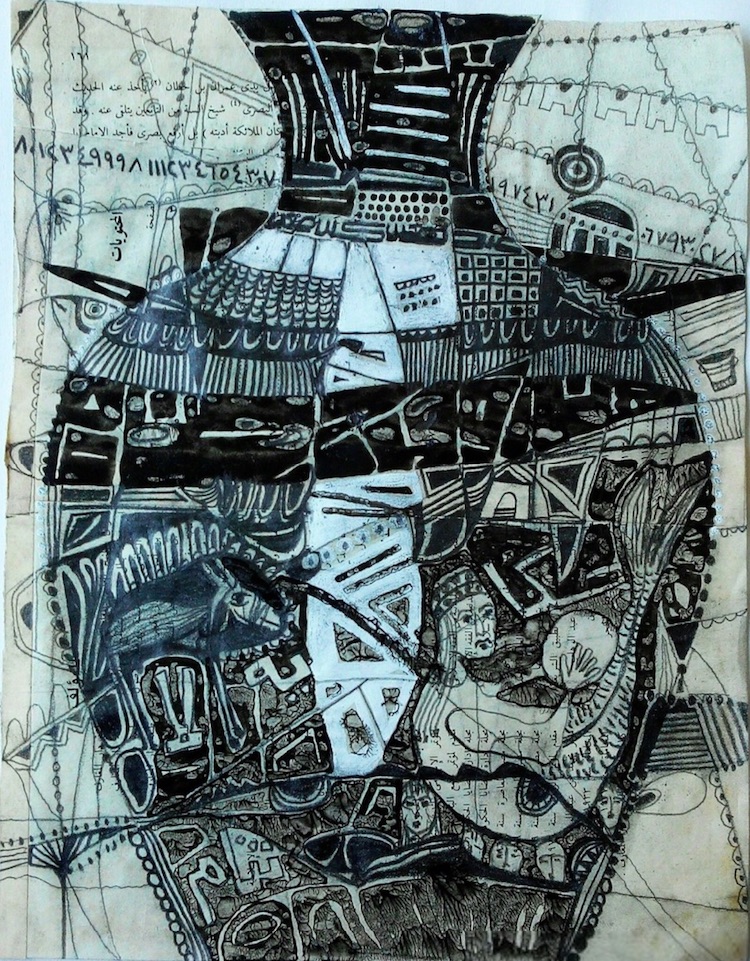
Fathi Hassan, Container of Fatma, 2016, Smalto , Acrylic and Black Pencil drawn on book paper, 11 3/5 × 9 1/10 inches
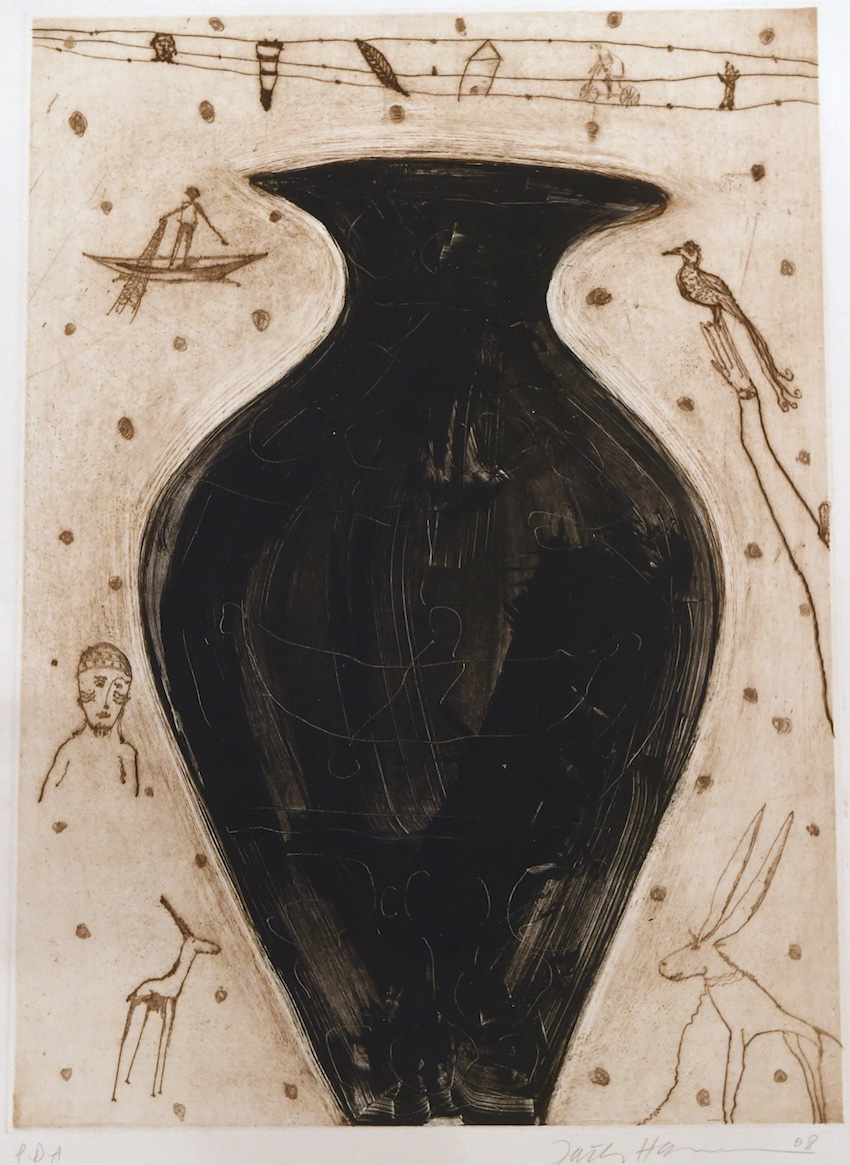

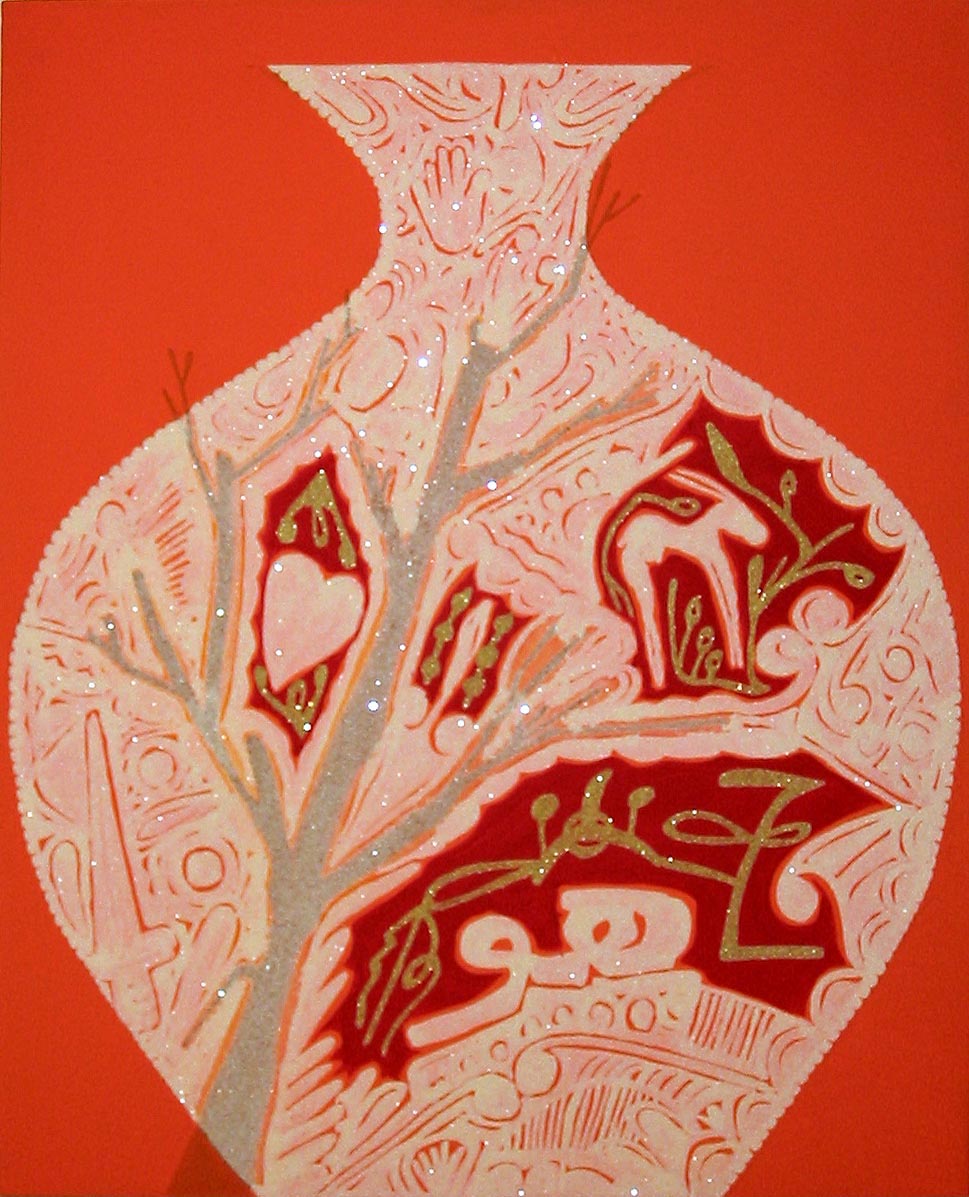
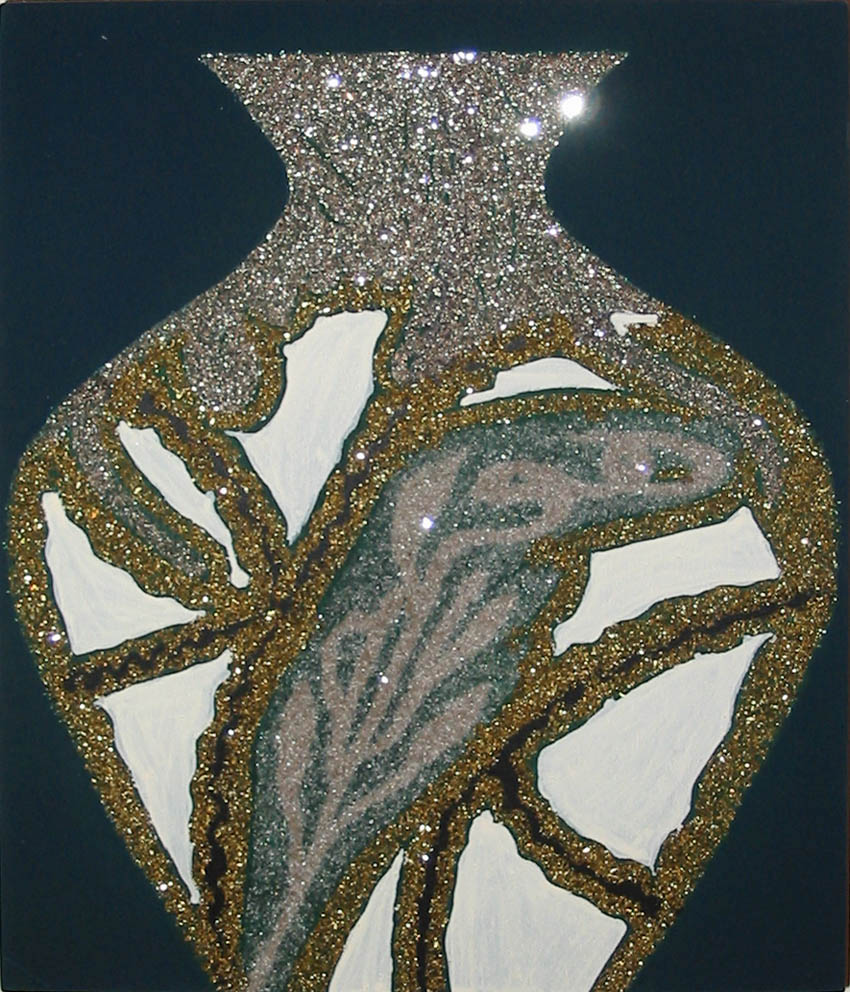
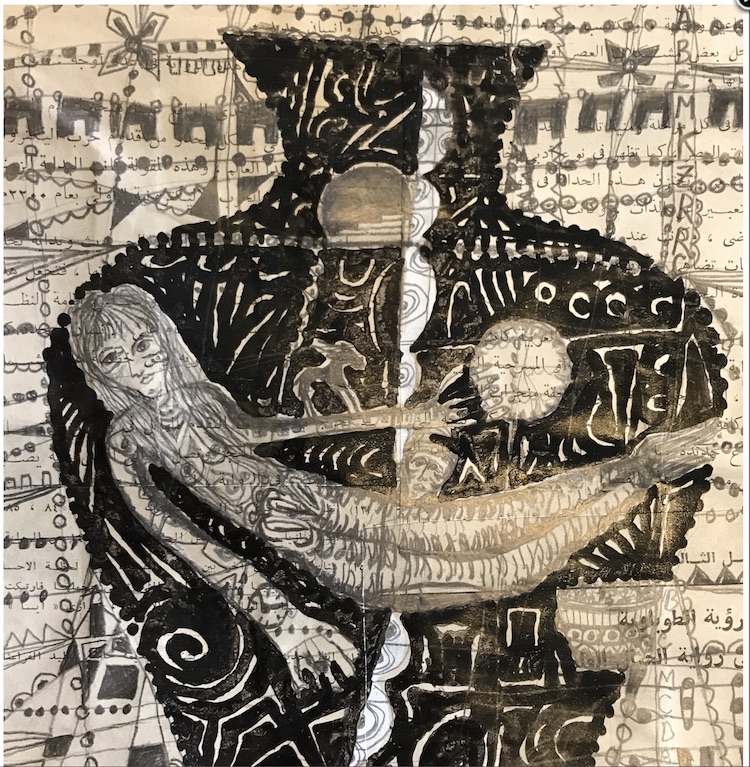
Canary Syndrome + Evan Hauser at Ferrin Contemporary Gallery
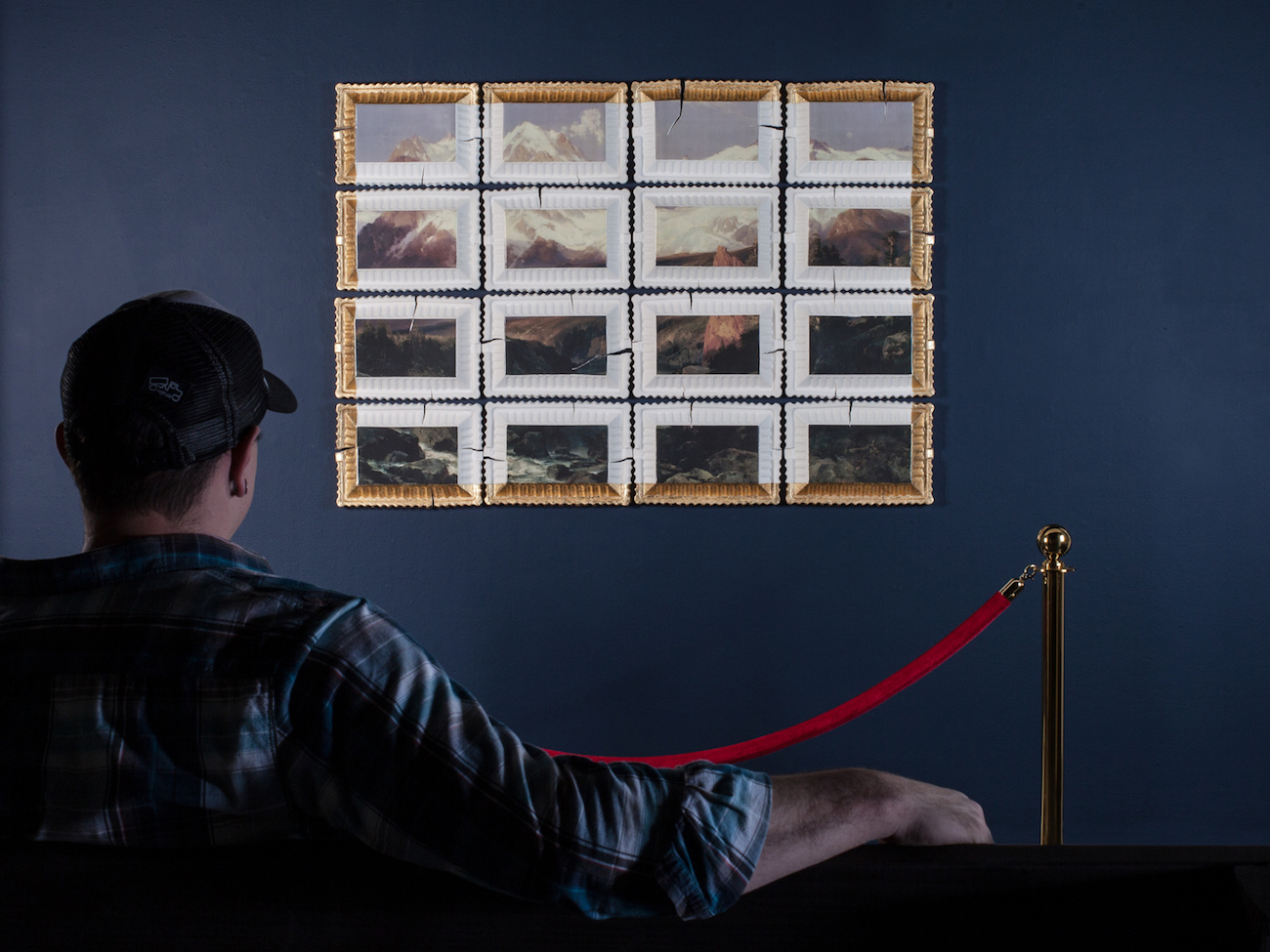
Evan Hauser, Preservation & Use #2 (Teton Range by Thomas Moran), 2017, Porcelain & Gold Leaf, 44 x 60 x 2.5 inches
Evan Hauser‘s porcelain styrofoam-casted gold frames were Spotted at Ferrin Contemporary Gallery’s group show Canary Syndrome (September 27–November 4, 2018 ), which aimed to illustrate the consequential and problematic nature of the U.S.’s imperialist ideology and westward expansion, as well as its perpetual ripple, felt even now, as the gallery writes.
The exhibition, inspired by the saying “canary in the coal mine”, suggests that artists, much like the caged canaries once used by coal miners as early indicators of dangerous gases in tunnels, are hypersensitive to the adverse conditions and forces that jeopardize human existence. Through their artwork, the artists in Canary Syndrome employ visual means to accentuate threats to the health of the environment, culture, and ethics — really, the condition of civilization in general, and to warn of worse things to come.
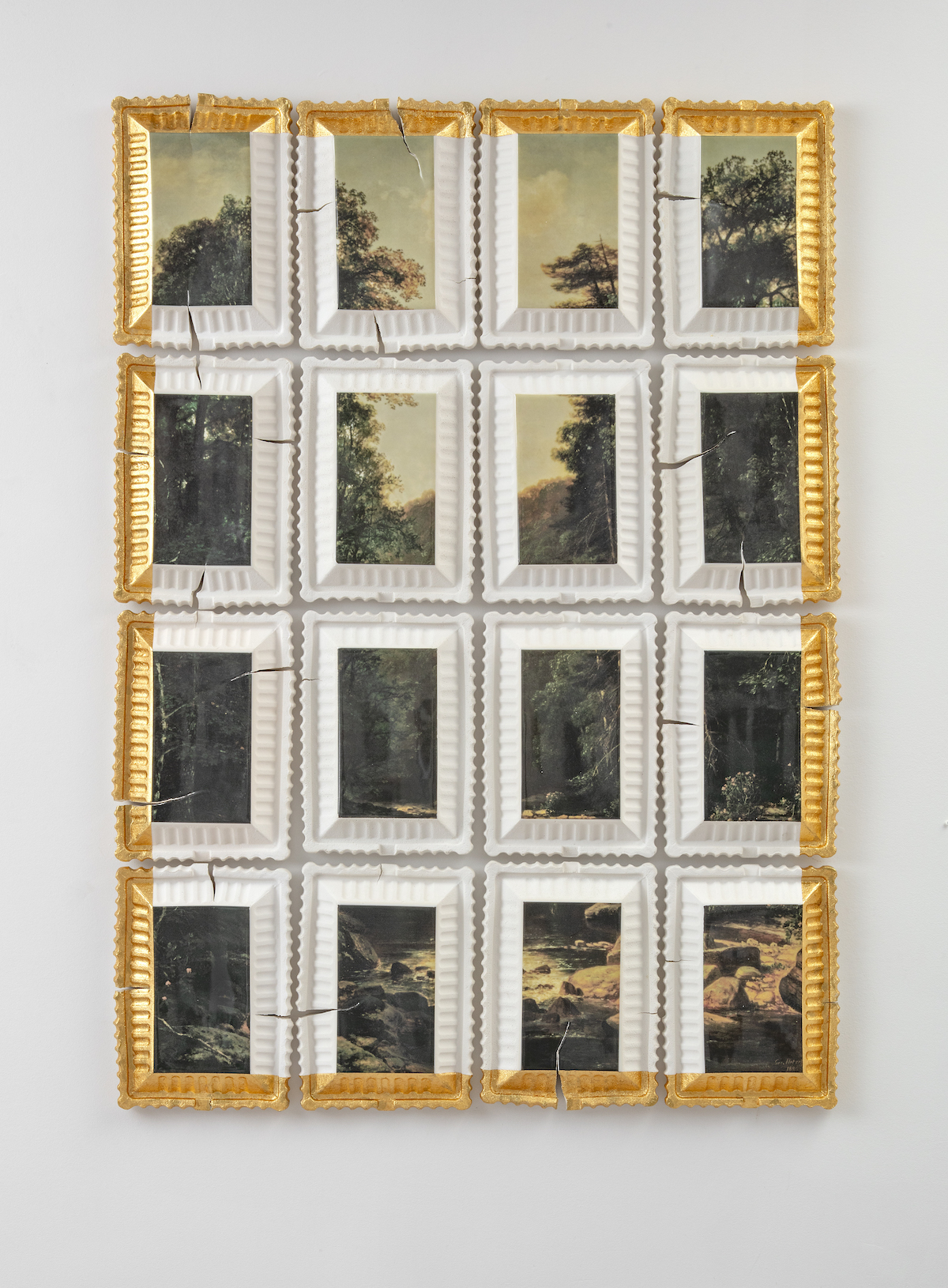
Evan Hauser, Preservation and Use #3 (Landscape with River, George Hetzel, 1880), 2018, Porcelain, gold leaf, 62 x 42 x 2.5 inches
In Hauser’s Preservation and Use #3, the artist encases a landscape painting by French-American naturalist painter George Hetzel. In his work, perhaps Hauser is attempting to dam-up Hetzel’s river, clogging its serene waters with ubiquitous packing. He similarly plugs-up Yellowstone Falls by Albert Bierstadt and corrals Thomas Moran’s Teton Range. It’s no wonder Hauser used works by Hudson River School painters: aware of the true price of Manifest Destiny, Hudson River School artists began to incorporate this skepticism into their works (Think: Thomas Cole’s The Course of Empire) and can be said to be the country’s first environmentalists.
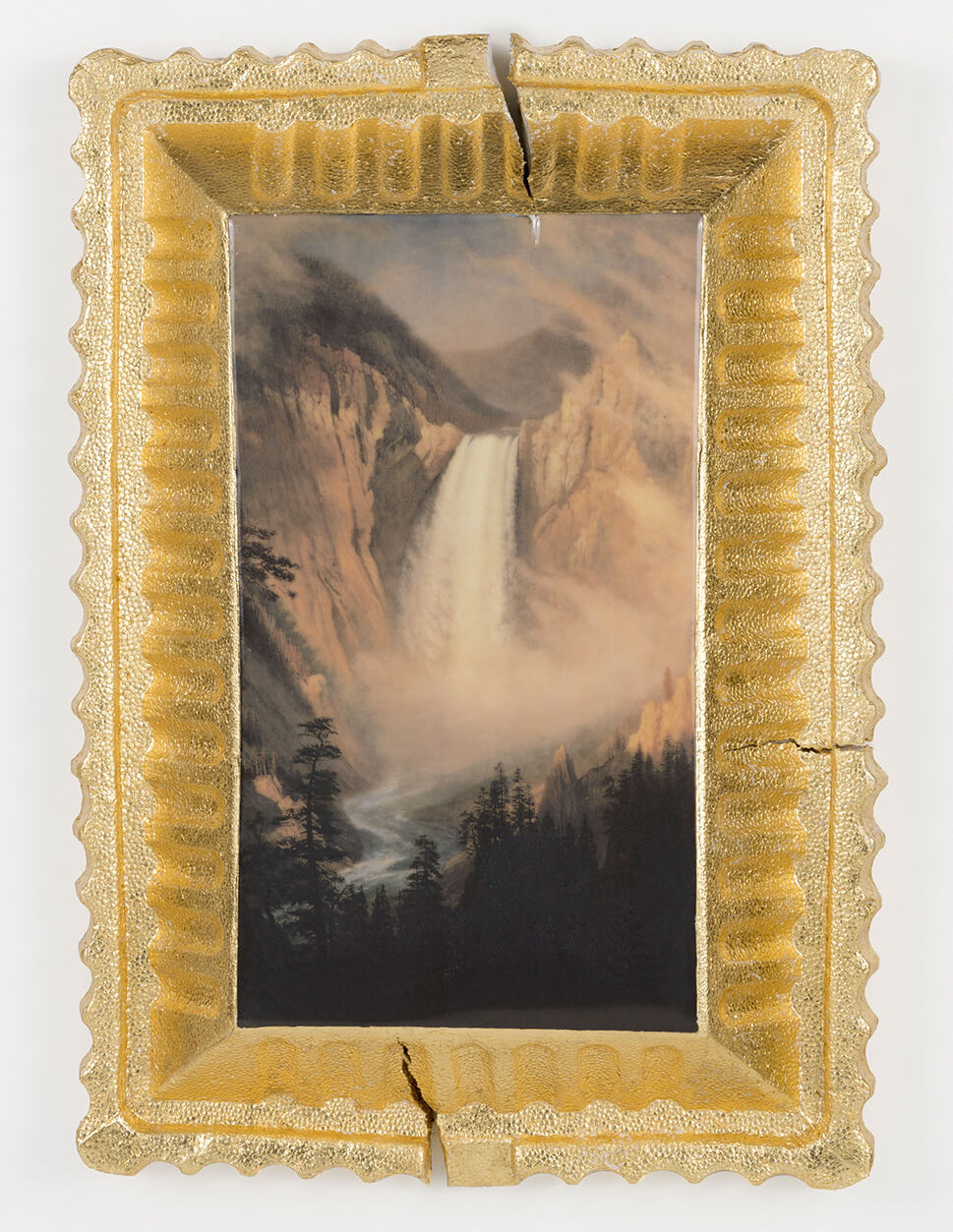
Evan Hauser, Preservation & Use (Yellowstone Falls by Albert Bierstadt), 2017, Porcelain and Gold Leaf, 15 x 11 x 2.5 inches
The show featured recent works by U.S. and U.K.-based artists including Elizabeth Alexander, Evan Hauser, Elliott Kayser, Stephen Young Lee, Beth Lipman, Livia Marin, Paul Scott, Bouke de Vries, and Jason Walker.
Other works by Hauser, not included in Canary Syndrome:
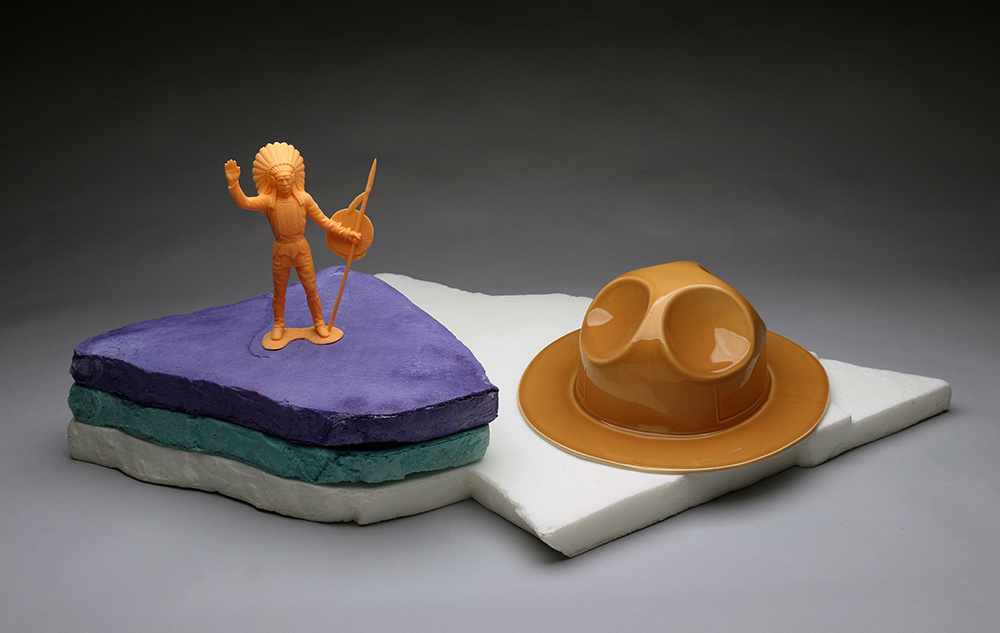
Evan Hauser, My Guilt When Recreating, 2015, Ceramic, cast polyurethane foam, appropriated figurine, 30 x 14 x 7 inches

Evan Hauser, The Herd, 2016, Ceramic, Iron, Wood, 4′ x 5.5 x 3.5 feet
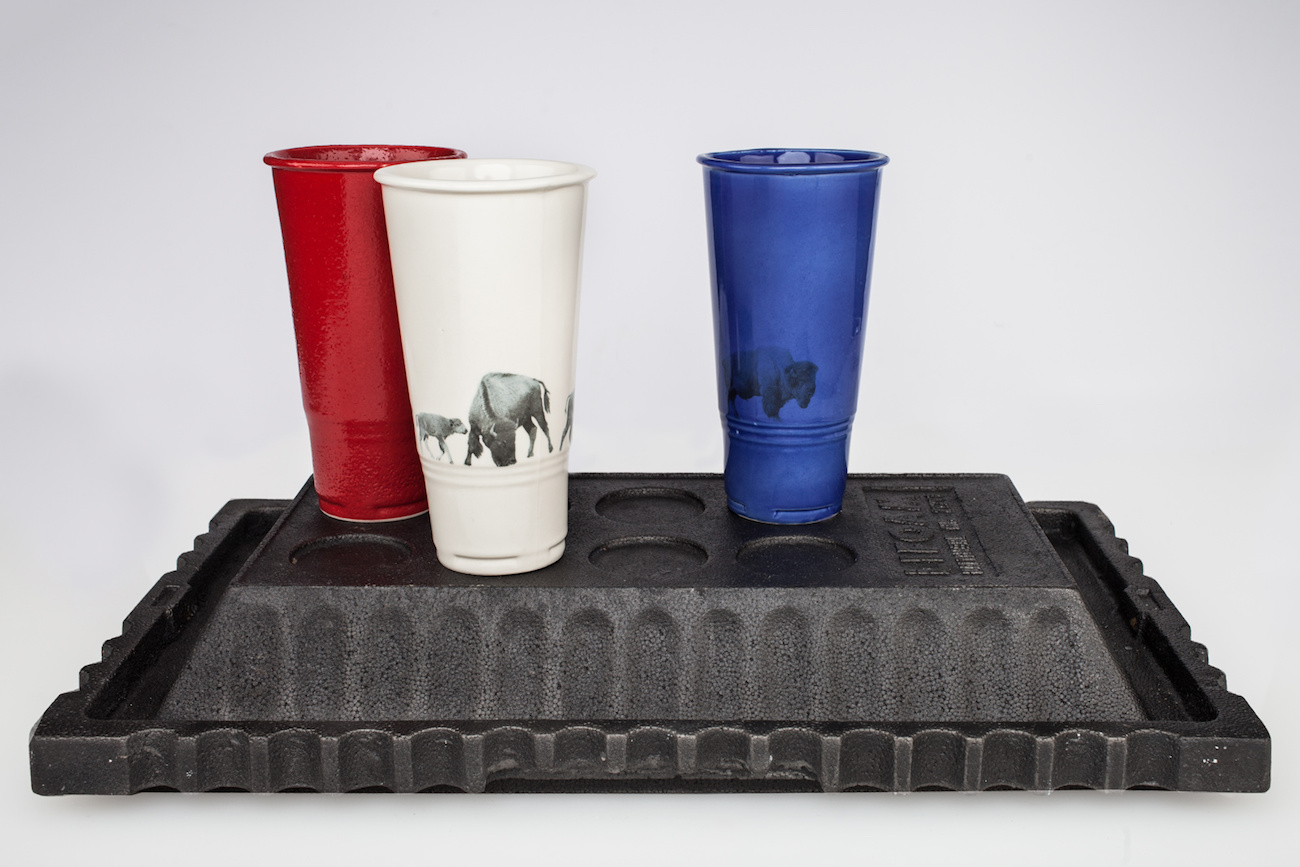
Evan Hauser, The Experience, 2016, ceramic & Iron, 21 x 13 x 11 inches
Michael Dopp in Present Progressive
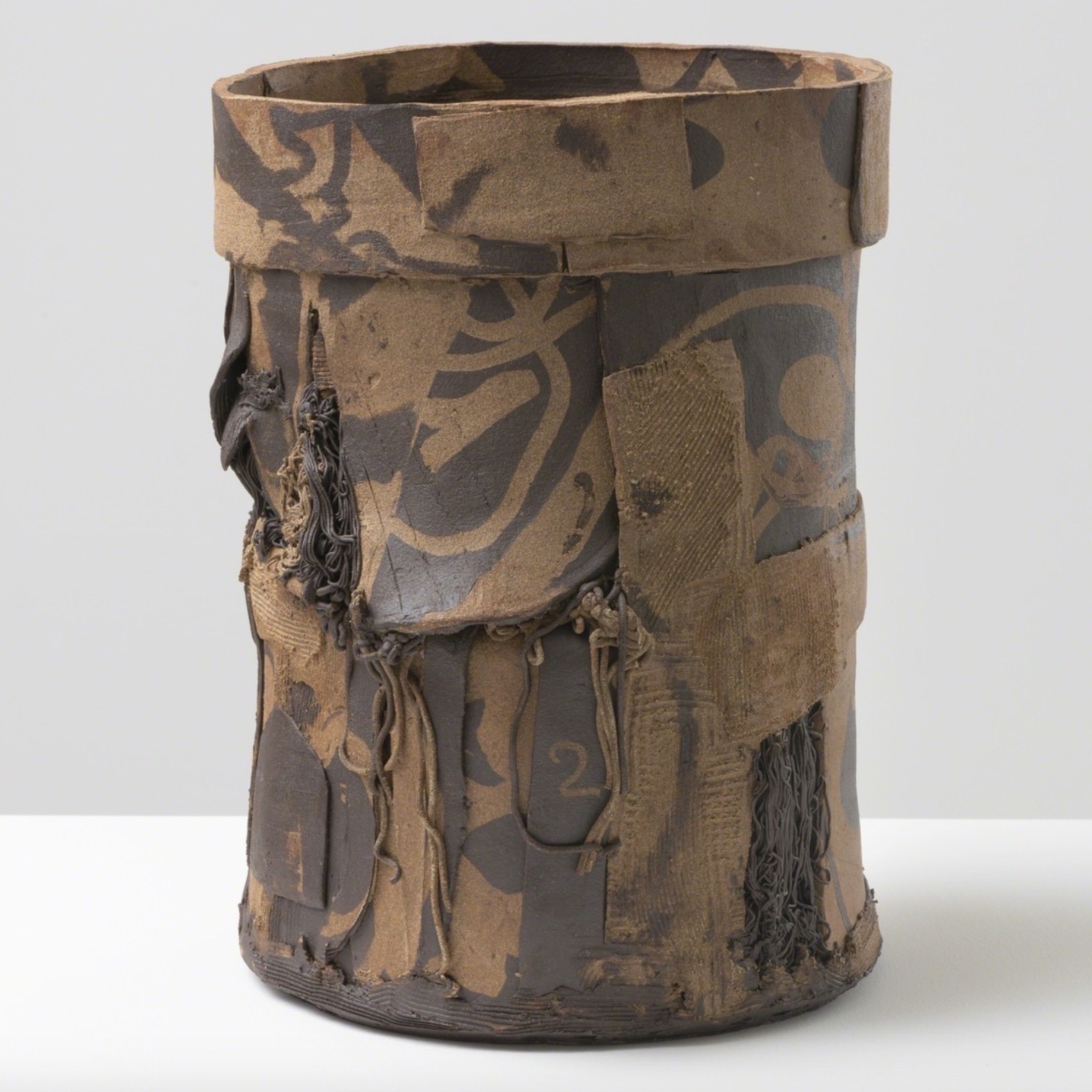
Michael Dopp, Shining Desert_6, 2018, Stoneware, 14 x 10 x 10 1/2 inches. Available from Roberts Projects
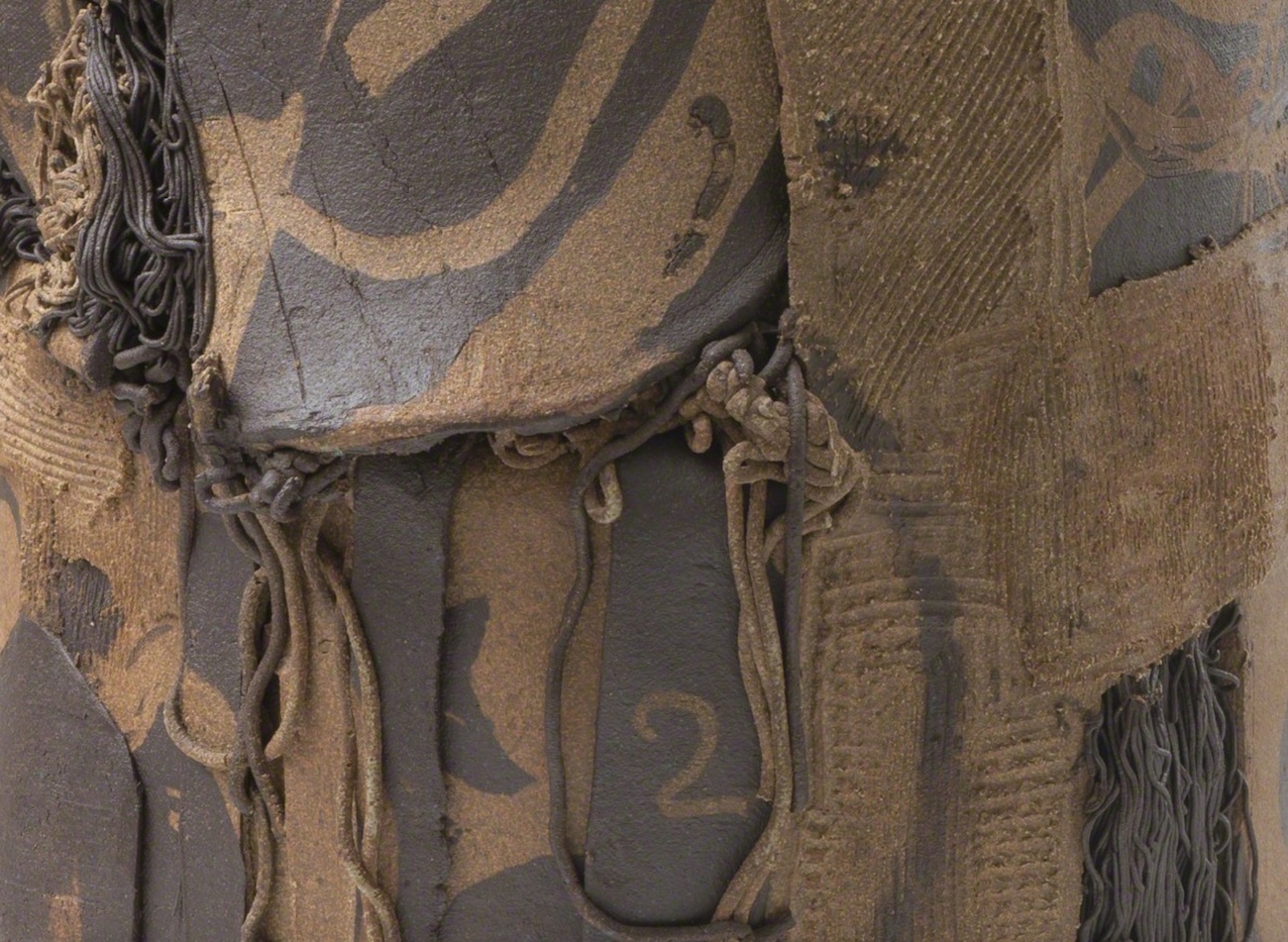
detail
We Spotted the work of Michael Dopp at Setareh Gallery’s annual exhibition Genius Loci. In its 6th edition, the exhibition features Los Angeles in Present Progressive (Düsseldorf, July 5 – August 24, 2018) curated by Marcus Herse, the gallery writes.
Entitling the exhibition Present Progressive, Marcus Herse – himself German-born – departs from a grammatical dimension of the English language in order to reflect on what might constitute the spirit of Los Angeles. The Present Progressive, also known as Present Continuous, allows speakers of English to express what they are currently doing – a distinction that is absent from the German language. This, according to the idea of the exhibition, could be useful in understanding what defines the Angeleno standpoint: focusing on the spur of the moment, describing the action in itself as is unfolds. In contrast, the German is more likely to use holistic, rather goal-orientated descriptions of a situation.
Read more here.
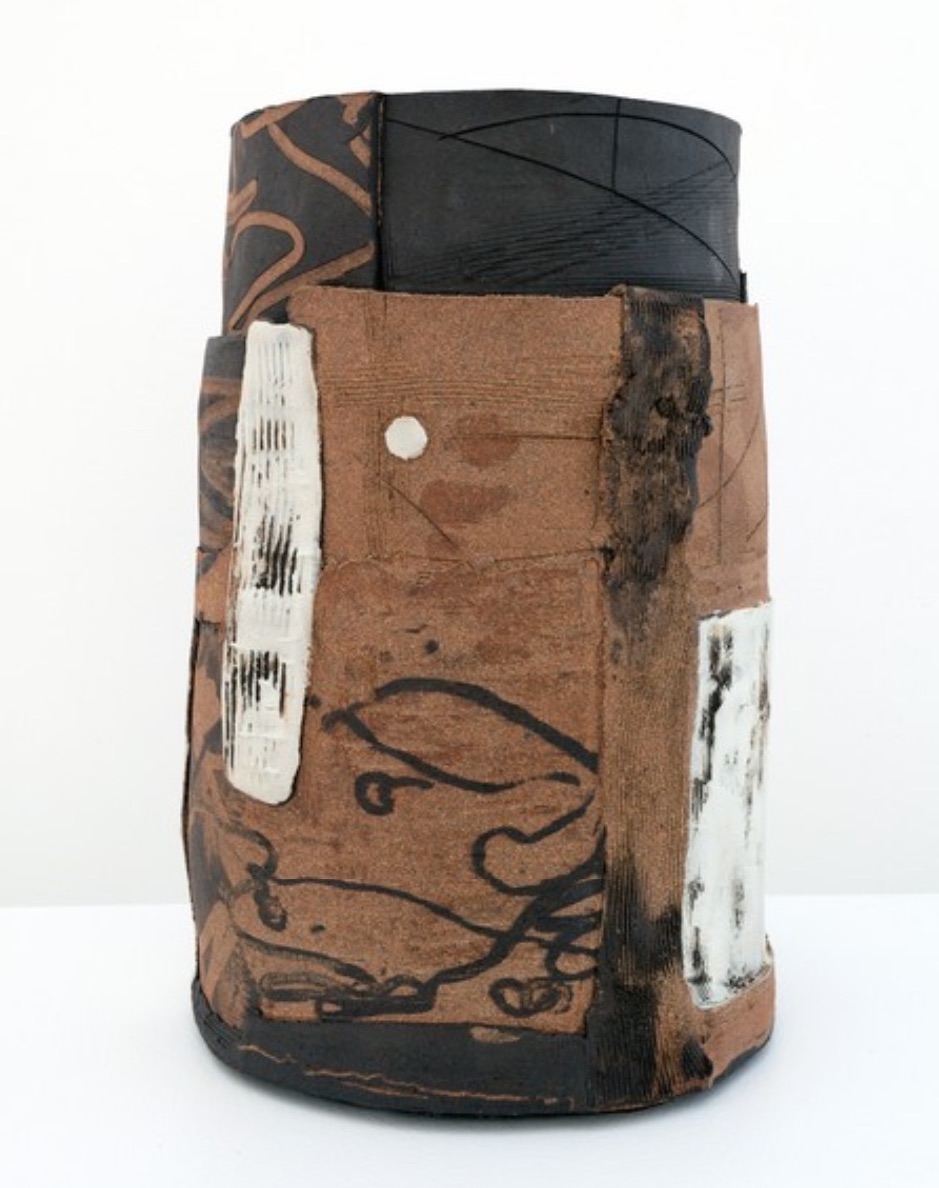
Michael Dopp, Shining Desert_17, 2018, Unglazed stoneware, 10 1/5 x 8 3/10 inches. Available from Setareh Gallery
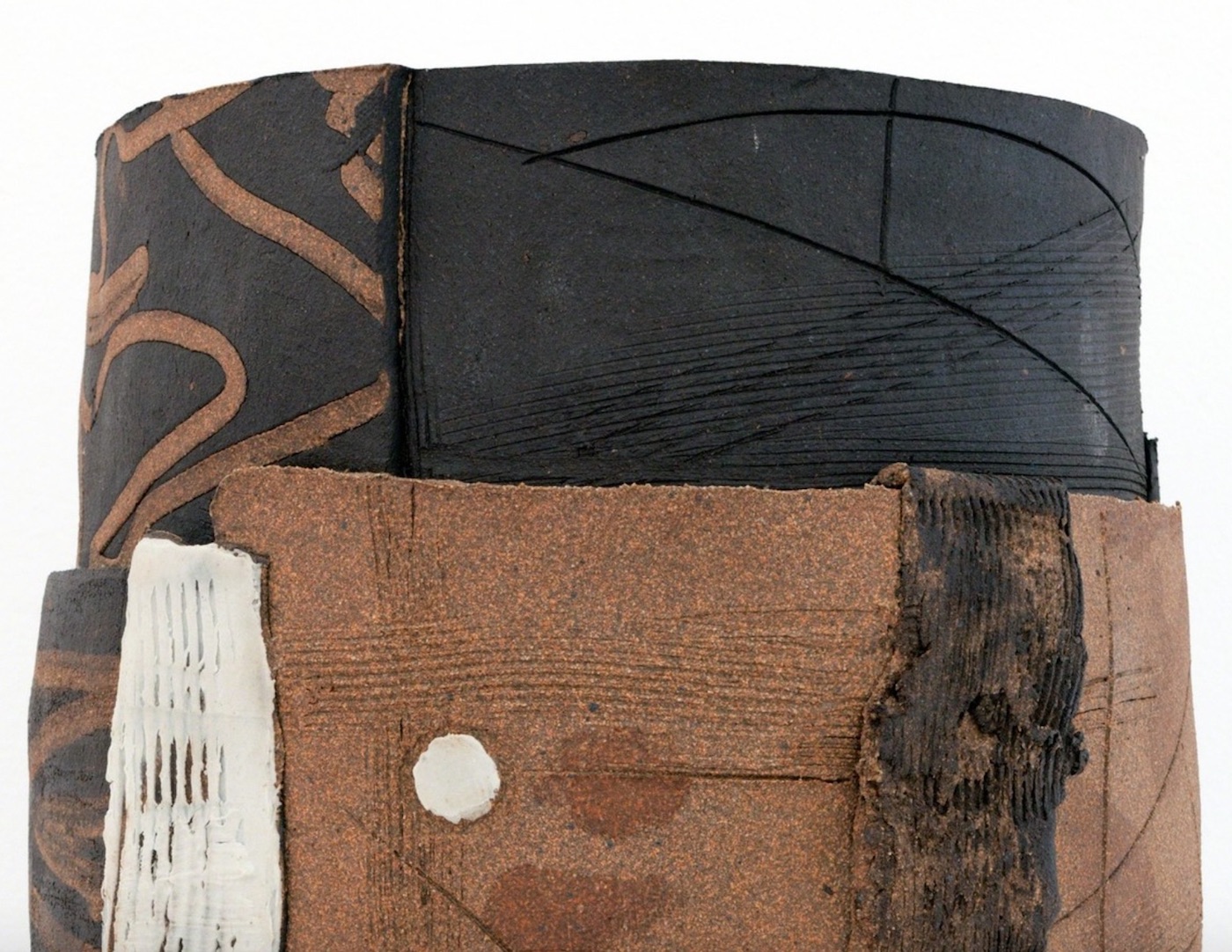
detail
Other works by Dopp, not included in Present Progressive:
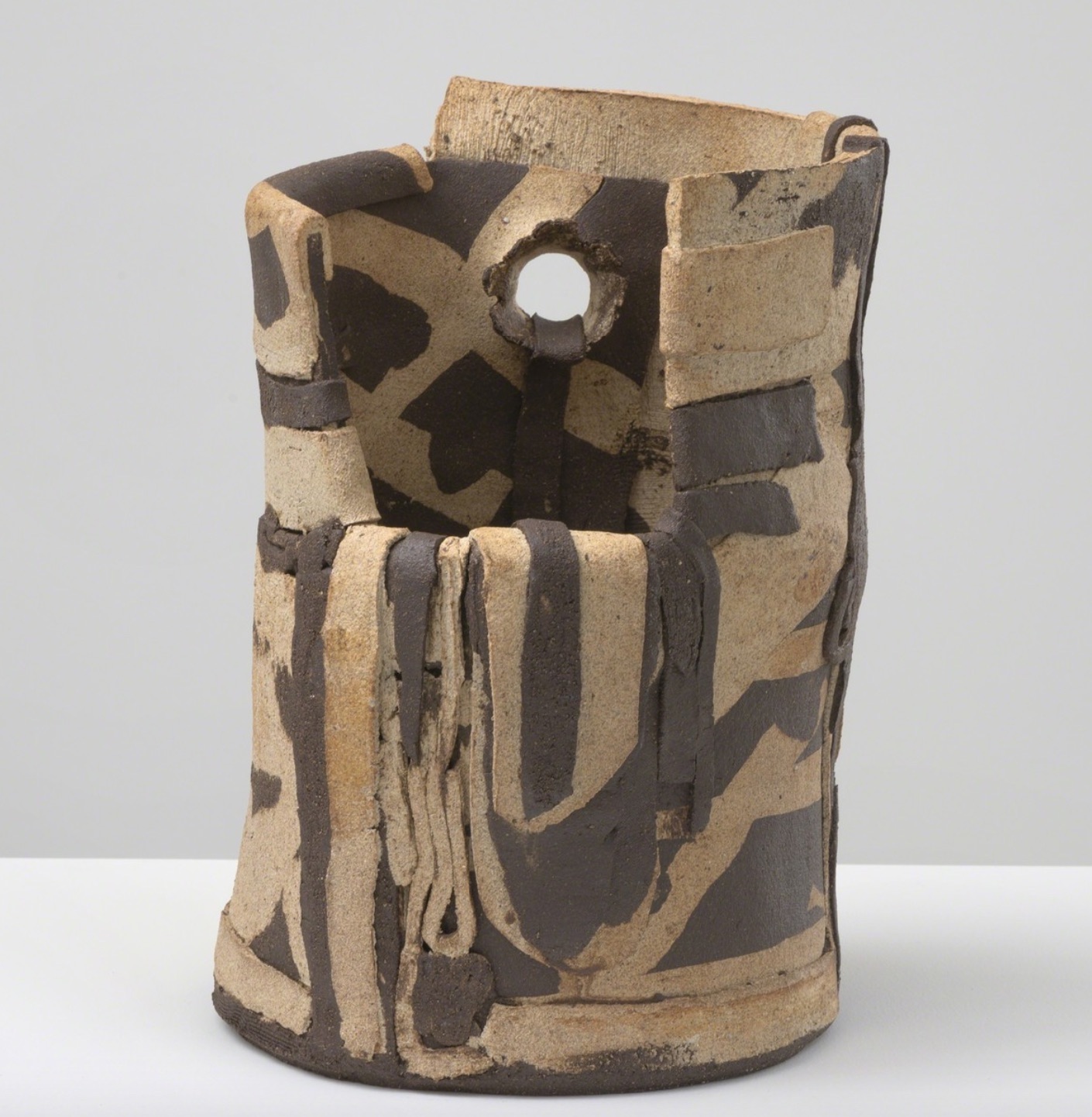
Michael Dopp, Shining Desert_12, 2018, Stoneware, 113 1/4 x 9 1/2 x 9 3/4 inches. Available from Roberts Projects
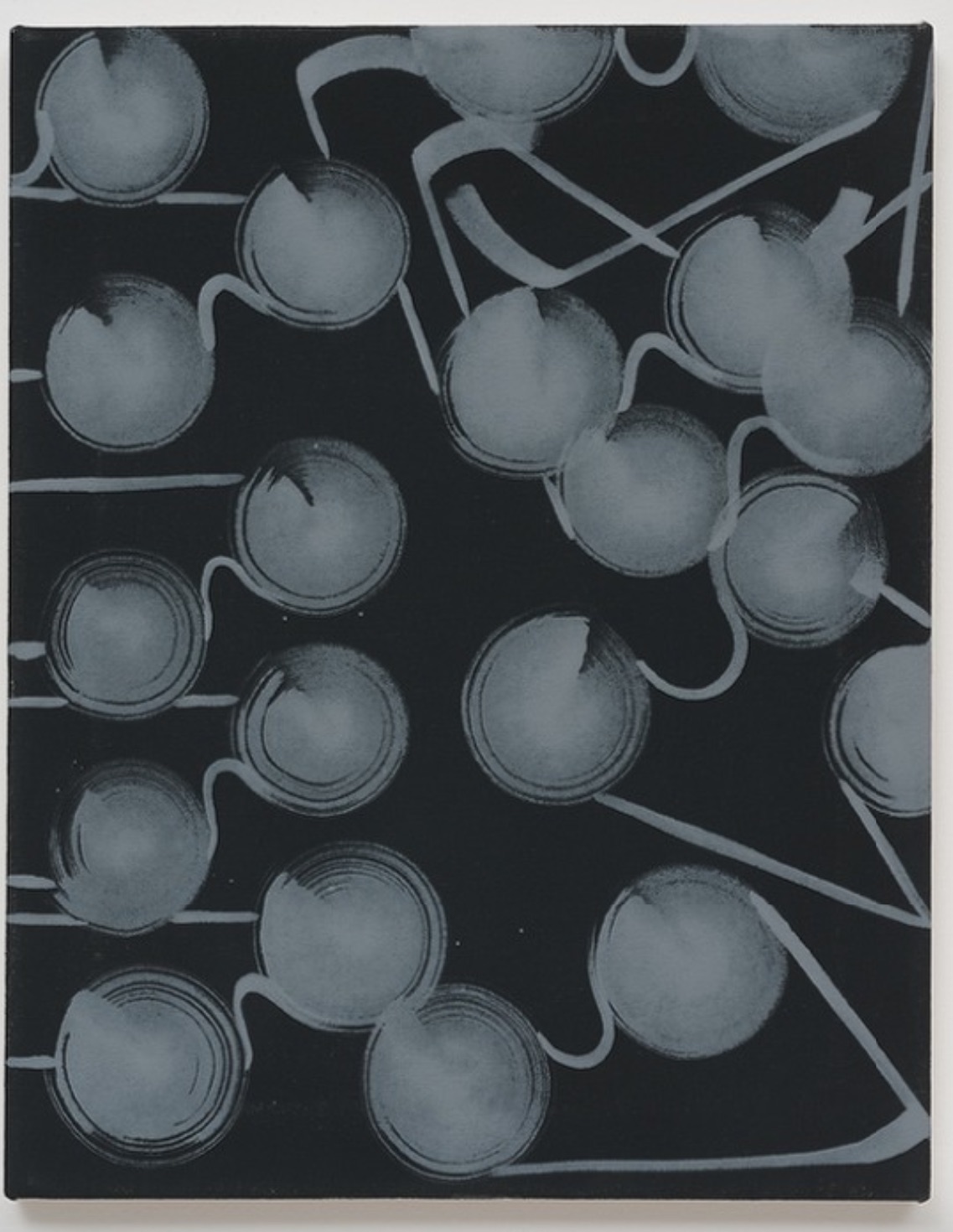
Michael Dopp, Untitled (Dark Glasses), 2013, Cel-vinyl on canvas, 19 x 15 inches. Available from Roberts Projects

Michael Dopp, Shining Desert_14, 2018, Stoneware, 19 1/2 x 10 1.4 x 9 3/4 inches. Available from Roberts Projects

Michael Dopp, Janice (lemons), 2017, Ink on paper, 19 x 13 inches. Available from Roberts Projects
On Display: People’s Business in a Custom-Printed Town Square
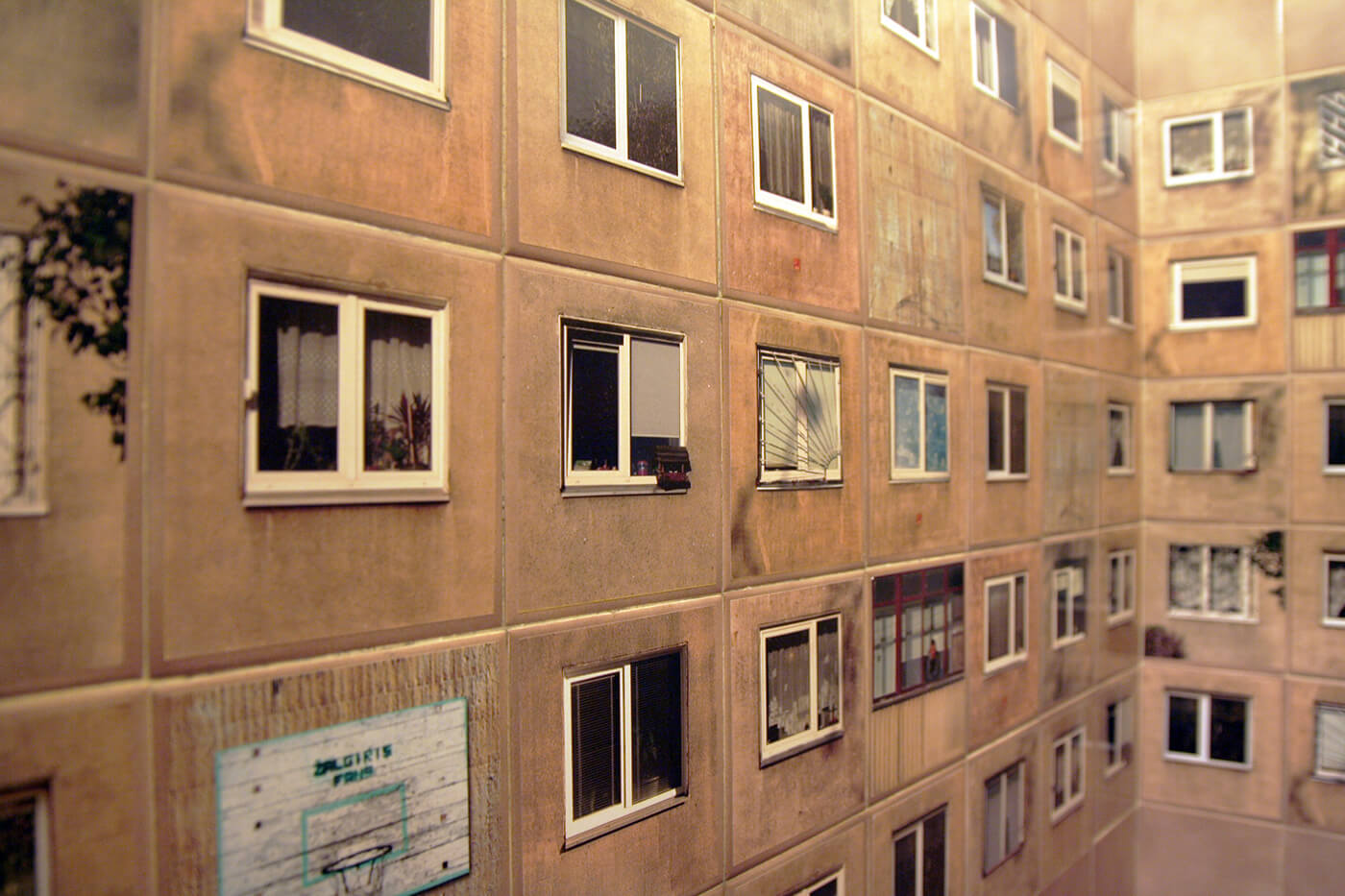
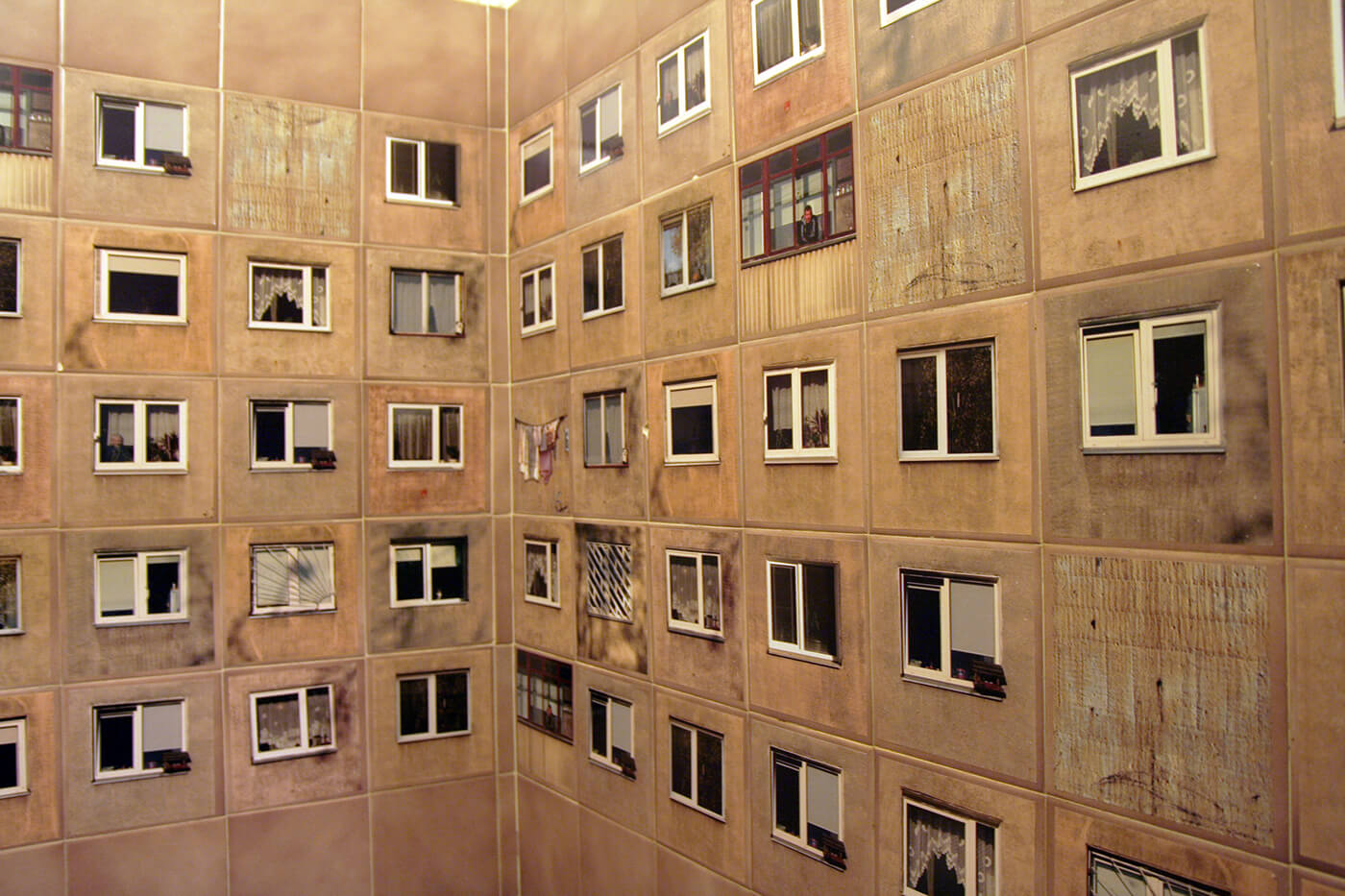
Who’s watching who here? One may feel as though they’re being watched while at their most vulnerable, but it may be the occupant taking a peek inside someone’s window. Luckily for all involved, this restroom has been outfitted with custom-printed tiles to yield the unsettling effect and are the creative product of Lithuanian design studio Gyva Grafika, Colossal writes.
Each tile features a unique view of a generic rectangular window, offering glimpses into the nuanced lives of individuals. Some windows are closed to the viewer with lace curtains; in others, a person or a houseplant peeks out. The creators share that the photos are from the neighborhood where the bathroom is located. They first made stickers to apply to the tiles, and then experimented with printing the photos directly on the tiles.
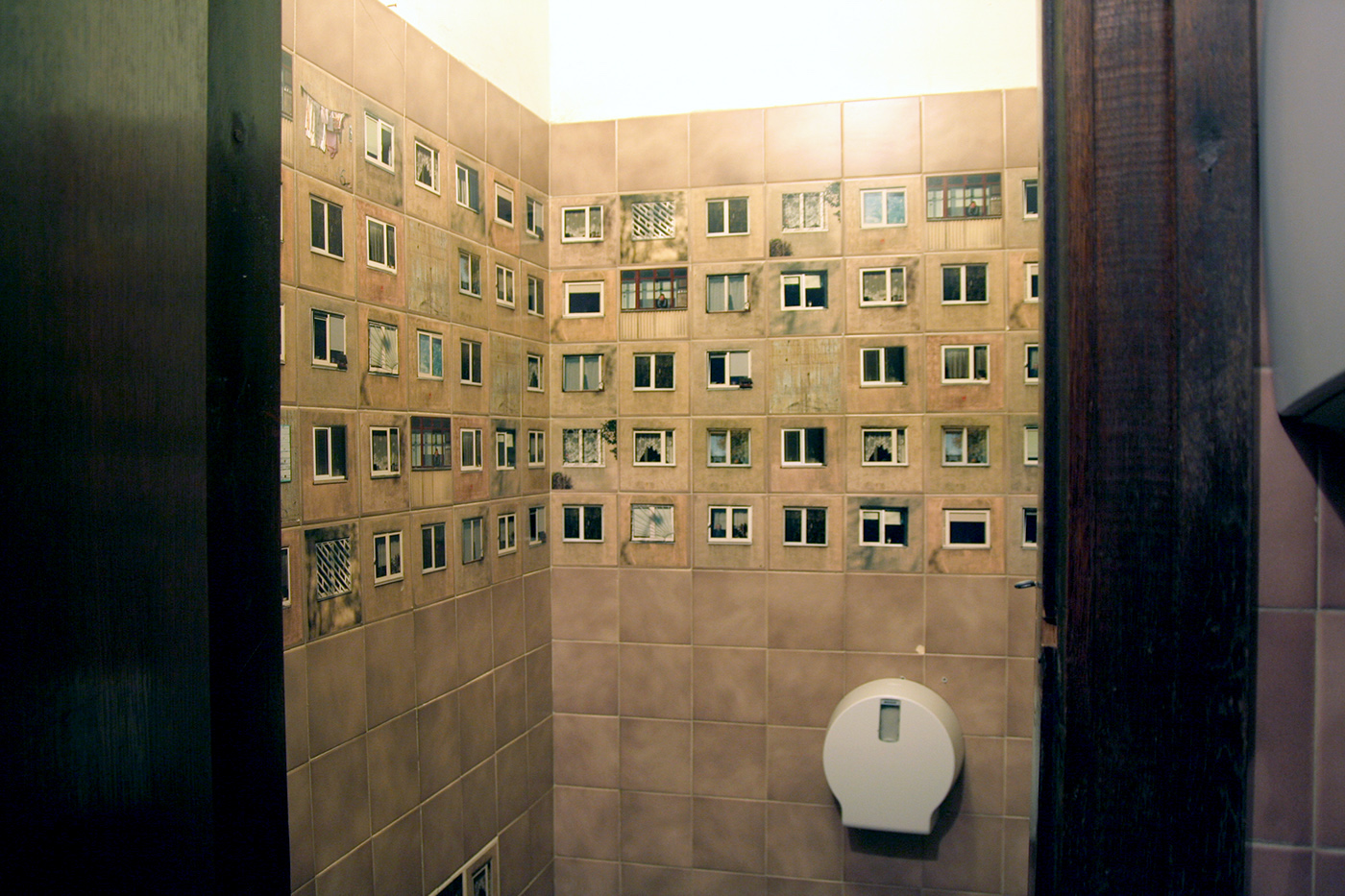
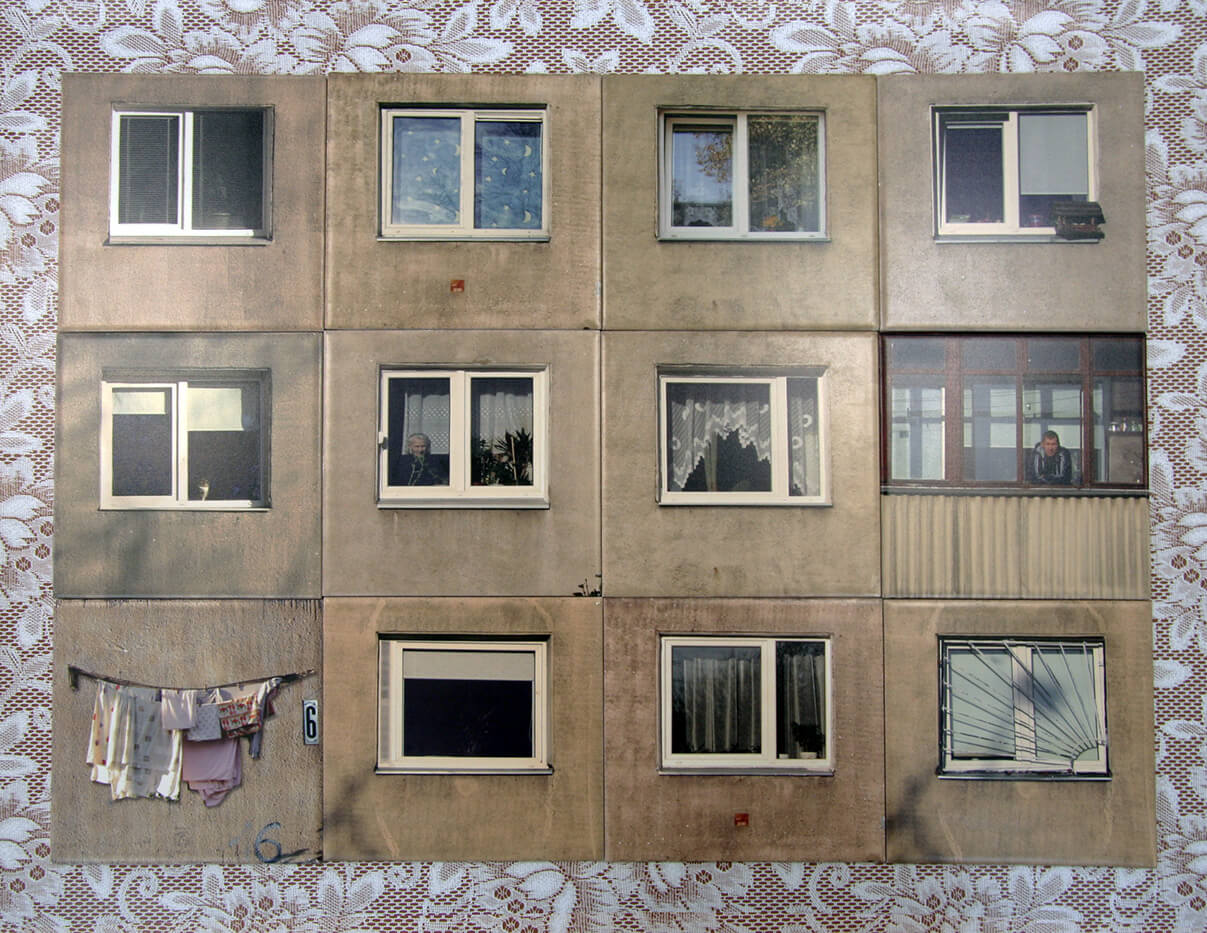
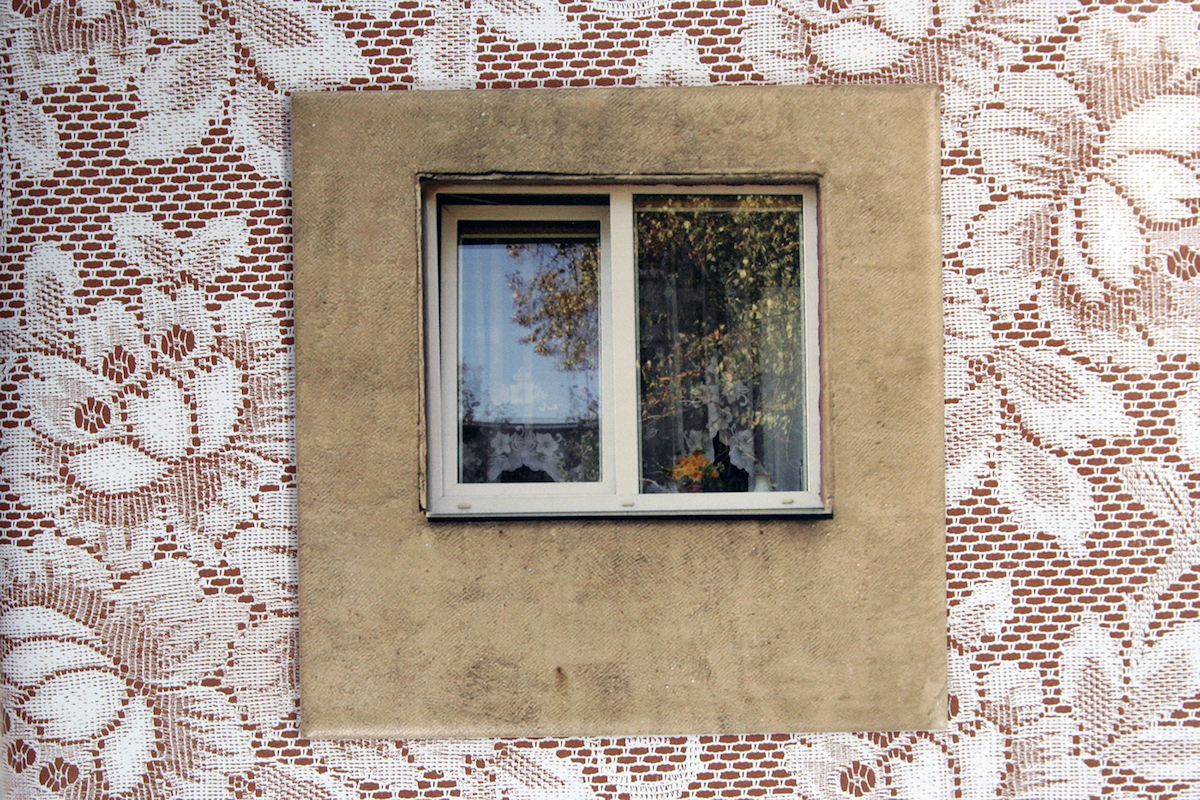

Love or loathe this highlight from the world of contemporary ceramic art and contemporary ceramics? Share your thoughts in the comments section below for a chance to win our “Best Comment of the Month” contest. One lucky commenter will win a copy of the book Shifting Paradigms ($100 value) signed to the winner by our very own Garth Clark and Mark Del Vecchio (priceless).
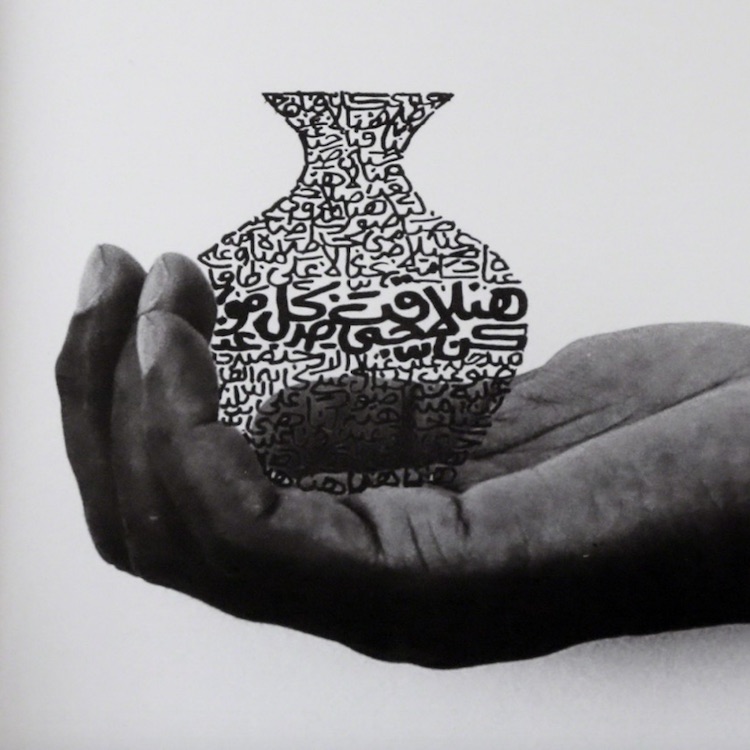
Add your valued opinion to this post.